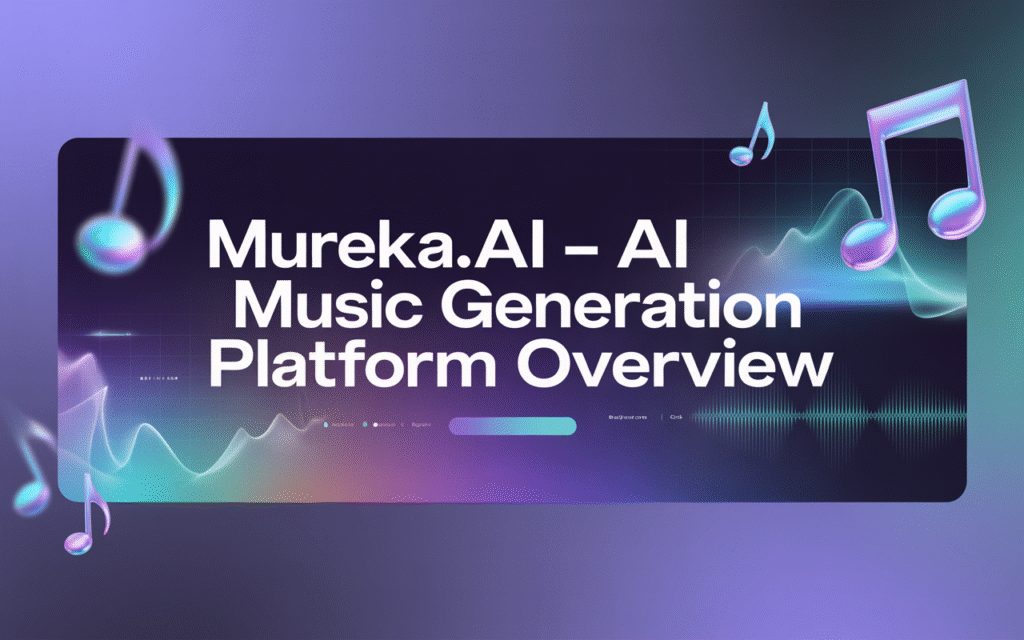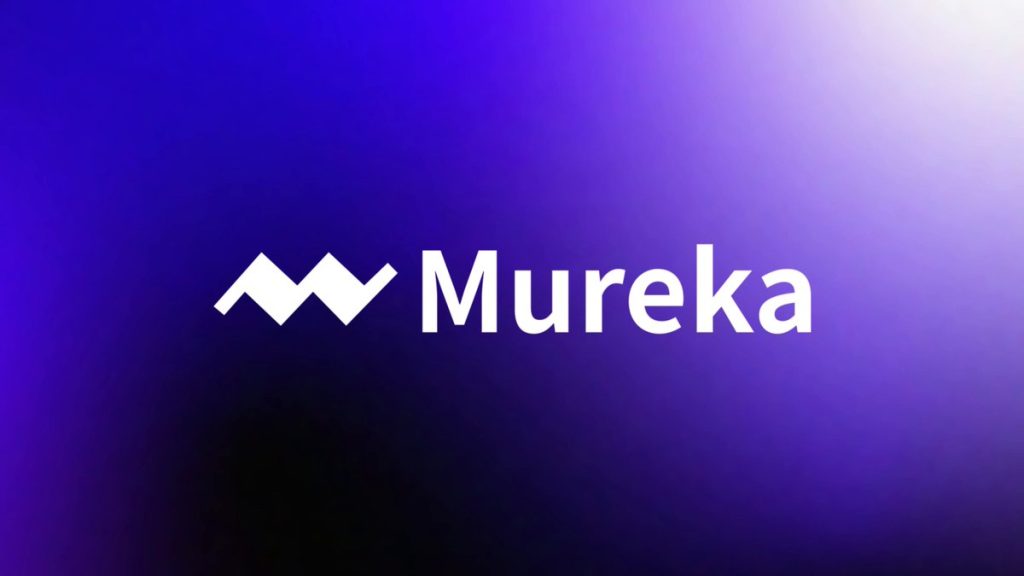Today, we’;re diving deep into a track that has resonated with millions: “DEPRESSED” by the incredibly talented Anne-Marie. This song isn’t just another pop hit; it’s a raw, honest, and darkly witty anthem for anyone who’s ever had to put on a brave face. We’ll explore its powerful lyrics, analyze its production, and I’ll even show you how you can channel its creative energy to make your own unique tracks using AI music tools like Mureka.

What is “DEPRESSED” by Anne-Marie?
Released on September 19, 2025, “DEPRESSED”; quickly captured global attention, not just for its catchy pop hooks but for its unflinching honesty. The song became a viral sensation on platforms like TikTok even before its official release, with a snippet amassing over 56,000 creations (Daily Music, 2025-09-20). It’s a track that perfectly encapsulates the feeling of smiling on the outside while struggling on the inside.
The Story Behind “DEPRESSED”: Lyrics and Background
To understand the song, you have to understand its origin. Anne-Marie has been open about her personal battles, including postnatal depression and anxiety following the birth of her daughter in 2023 (BBC, 2025-07-16). She revealed that “DEPRESSED” was written just two months before its release, making it a very current and personal reflection of her state of mind.
She explained her goal for the song in an interview with Heart’s *No Filter*: “My aim of this song was just to hope that people that are feeling a bit low at the moment could listen to the song and for, like, three minutes feel a little bit happier. That was my goal.” (Heart.co.uk, 2025-09-29).
| Attribute | Details |
|---|---|
| Artist | Anne-Marie (feat. Lauren Spencer Smith on some versions) |
| Release Date | September 19, 2025 |
| Genre | Pop |
| Writers | Anne-Marie Nicholson, Grace Barker, Henry Tucker, Ryan Linvill |
| Producer | Ryan Linvill |
| Label | Major Tom’s, Asylum Records |
The lyrics are a masterclass in juxtaposition, pairing vulnerable confessions with a deceptively upbeat tone. Let’s look at the chorus:
Oh, ain’t it funny how
I seem fine, but I’m depressed?
I look so pretty, but I’m a mess
I think I’m immune to happiness, oh, why?
Oh, ain’t it funny how
I wanna be brave, I’m terrified
To get myself dressed and go outside
I say I’m okay, I’m fine, all jokes aside
If I don’t laugh, I’ll cry, cry, cry
This contrast is the song’s core strength, making a heavy topic accessible and incredibly relatable. The official music video, directed by Benji Gershon, visually mirrors this idea with its candy-colored aesthetic, street-corner choreography, and Anne-Marie being playfully hit with water balloons while dancing through London streets.
Musical Style and Production Analysis
From a producer’s standpoint, “DEPRESSED”; is a fascinating piece of pop engineering. It’s a pop song, but producer Ryan Linvill opted for a stripped-back production that lets the lyrics and Anne-Marie’s vocal performance shine. The arrangement is built on what critics have called “infectious pop hooks” (Stereoboard, 2025-09-19), but it avoids the over-the-top layers common in today’s chart-toppers.
The instrumentation is deceptively simple: a driving beat, a clean bassline, and subtle synth pads create a foundation that feels energetic without being overwhelming. This choice is crucial. A busier arrangement might have drowned out the lyrical message. Instead, the space in the mix allows the emotional weight of the words to land with full impact. The song’s structure is also noteworthy for its brevity; it ends after the second chorus, lacking a traditional bridge, which makes it feel like a sharp, concentrated burst of emotion that encourages immediate replay.

A Lyrical Breakdown of “DEPRESSED”
The power of the Depressed lyrics lies in their raw, conversational honesty. Anne-Marie uses simple, everyday language to describe the complex and often contradictory feelings of living with depression. Let’s break down some key themes.
- The Façade of Happiness: Lines like “I seem fine, but I’m depressed” and “I got so damn good at pretendin’ that I could win a BAFTA” perfectly capture the exhausting performance of being okay. It’s a feeling many people with mental health struggles know all too well—the pressure to maintain a happy exterior for the sake of others.
- Internal vs. External Worlds: The song constantly contrasts how things appear with how they feel. “I look so pretty, but I’m a mess” is a powerful summary of this disconnect. The desire to “get myself dressed and go outside” is met with the paralyzing reality of being “terrified.”
- Humor as a Coping Mechanism: The central hook, “If I don’t laugh, I’ll cry,” is a profound statement on using humor to deflect and survive. It’s a defense mechanism that turns pain into a punchline, making it more manageable. This theme is what gives the song its “darkly witty” edge.
- Social Anxiety and Isolation: The verse “;I don’t want no conversation / I’m not good around new people / I’d rather stick to what I know and watch Malcolm in the Middle” is a painfully relatable depiction of social withdrawal. It highlights the comfort of isolation, even when it contributes to feelings of loneliness.
| Theme | Example Lyric | Analysis |
|---|---|---|
| The Public Mask | “I seem fine, but I’m depressed?” | Highlights the contrast between outward appearance and internal reality. |
| Humor as Defense | “If I don’t laugh, I’ll cry, cry, cry” | Shows how humor is used to cope with overwhelming sadness. |
| Social Withdrawal | “I’d rather stick to what I know and watch Malcolm in the Middle” | Illustrates the retreat into familiar comforts to avoid social anxiety. |
| Emotional Contradiction | “I wanna be brave, I’m terrified” | Captures the internal conflict between desire and fear. |
How to Create a Similar Vibe with an AI Music Generator
Inspired by “DEPRESSED”? What if you could capture that blend of upbeat pop and raw lyrical honesty in your own music? This is where AI music creation tools like Mureka come in. As someone who has tested dozens of these platforms, I’ve found that the key is to use AI as a collaborative partner, not just a button to push.
Mureka is particularly well-suited for this because it offers multiple ways to guide the AI, from text prompts to uploading reference tracks. Let’s walk through how you could create a song in the style of “DEPRESSED.”

Step-by-Step: Creating an Anne-Marie-Style Track on Mureka
- Start with a Strong Prompt: The first step is to give the AI clear instructions. Instead of just “pop song,” get specific. Go to Mureka’s creation page and try a prompt like: “An upbeat, minimalist pop track in the style of Anne-Marie. Stripped-back production with a clean bassline, a simple 4/4 drum beat, and subtle synth pads. The mood should be ironically cheerful but with an undercurrent of melancholy. 120 BPM, minor key.”
- Use the “Style Reference” Feature: This is Mureka’s secret weapon. You can upload an audio file or even paste a YouTube link to “DEPRESSED.”; The AI won’t copy the song, but it will analyze its core components—instrumentation, tempo, chord progression, and overall vibe—to generate something new with a similar feel. This is perfect for capturing that specific production style.
- Generate and Refine Lyrics: Mureka has a built-in lyrics generator. You can feed it themes like “;hiding sadness” or “feeling lonely in a crowd.” The AI will generate verses and a chorus. The key is to treat this as a first draft. Take the AI’s output and inject your own personal experiences and unique phrasing to make it truly yours.
- Customize the Arrangement: Once Mureka generates the initial track, you can use its editor to fine-tune the song. The Pro plan, for instance, allows you to export individual stems (vocals, drums, bass, etc.). This is a game-changer. You can import these stems into your own Digital Audio Workstation (DAW) like Ableton or Logic Pro to mix, add effects, and rearrange sections, giving you the ultimate creative control.
This hybrid workflow—using AI for initial inspiration and technical heavy lifting, then applying human creativity for refinement—is the future of music production. It allows you to move from idea to a polished demo in minutes. Have you tried using AI as a songwriting partner? I’d love to hear about your experiences in the comments.

The Bigger Picture: AI Music Trends and Technology
The creation of songs like “;DEPRESSED” and the tools used to make them are part of a much larger shift in the music industry. By 2025, the AI in music market is projected to grow significantly, with some estimates predicting it will reach over $6.65 billion (Market.us, 2025-11-04). This isn’t just about robots making music; it’s about a new era of human-AI collaboration.
How Does AI Actually Create Music?
At its core, AI music generation relies on deep learning models, particularly architectures like Transformers and, more recently, Diffusion Models. Here’s a simplified breakdown:
- Training Data: AI models are trained on massive datasets containing thousands of hours of music. They learn the patterns, structures, melodies, and rhythms that define different genres.
- Neural Networks: Models like Google’s Music Transformer use attention mechanisms to understand long-range relationships in music, allowing them to create coherent compositions that don’t just wander aimlessly. This is how they build repeating motifs and verse-chorus structures. (Huang et al., 2018)
- Generative Process: When you provide a prompt, the AI uses what it has learned to generate new sequences of notes or audio. Diffusion models, for example, start with random noise and gradually refine it into a structured piece of music, a process that often yields very high-fidelity results.
| Model Architecture | Primary Use Case | Key Characteristic | Example Platform/Model |
|---|---|---|---|
| Recurrent Neural Networks (RNN/LSTM) | Sequential data like melodies | “Remembers” previous notes to predict the next one. | Early TensorFlow Models |
| Transformers | Long-form composition, complex structures | Uses “self-attention” to capture long-range dependencies. | Google’s Music Transformer |
| Generative Adversarial Networks (GANs) | Audio synthesis (waveform generation) | A “generator” and “discriminator” compete to improve quality. | MelGAN |
| Diffusion Models | High-fidelity audio and music generation | Refines random noise into coherent audio over several steps. | Noise2Music, Udio |
The Human Element in AI Music Creation
Despite the advanced technology, the best results almost always come from a collaborative process. As a creator, your role shifts from being just a musician to being a creative director for the AI. Your ability to write effective prompts, curate the AI’s best ideas, and add your own unique touch is what elevates a generic AI track into a real piece of art.
This is why I’m excited about the future. AI isn’t replacing artists; it’s giving them a new, incredibly powerful instrument. For a deeper dive into how this technology is evolving, you can explore these AI generated music examples and see the creative possibilities for yourself.
AI music platforms are becoming vast libraries of inspiration, showcasing diverse genres and styles.
Conclusion: A Song for the Moment, A Tool for the Future
Anne-Marie’s “DEPRESSED” is more than just a hit song; it’s a cultural touchstone that gives voice to a shared, often silent, struggle. Its brilliant songwriting, which pairs raw vulnerability with an upbeat pop sensibility, makes it a modern classic. It reminds us that music’s greatest power is its ability to make us feel seen.
At the same time, the rise of powerful tools like Mureka shows us that the means of creation are becoming more accessible than ever. By understanding how to collaborate with an AI music generator, we can take inspiration from artists like Anne-Marie and explore our own creative visions, telling our own stories through sound. The future of music isn’t human vs. machine; it’s human *with* machine.

Frequently Asked Questions (FAQ)
What is the song “DEPRESSED” by Anne-Marie about?
The song is about the struggle with mental health, particularly depression and anxiety. The Depressed lyrics explore the theme of putting on a happy facade while dealing with inner turmoil, a feeling Anne-Marie has personally experienced and wanted to share to make others feel less alone.
Is there a version of “DEPRESSED” with another artist?
Yes, there is a popular version of “;DEPRESSED”; featuring Canadian singer Lauren Spencer Smith. They also performed the song live together on World Mental Health Day. (Instagram, 2025-10-20) Can I use Mureka to create music for commercial projects?
Yes. Mureka’s paid plans, particularly the Pro plan, offer full commercial rights for the music you create. According to their policy, users retain ownership of their AI-generated music, and the platform provides an ownership certificate to help you assert your rights for use on YouTube, TikTok, and other commercial projects. (Mureka.ai Review 2025)
What are Mureka’s subscription plans and pricing?
Mureka offers a freemium model. As of late 2025, the main plans are:
- Basic Music & Speech: $8/month (billed annually at $96). This gives you up to 400 songs per month and MP3 downloads.
- Pro Plan: $24/month (billed annually at $288). This includes 1,600 songs, WAV/stem downloads, voice cloning, and other advanced features.
It’;s always best to check the official Mureka website for the most current pricing. (Source: Mureka.ai, FindMyAITool.io)
Do I need musical experience to use an AI music generator like Mureka?
No, not at all. Platforms like Mureka are designed for creators of all skill levels. You can generate music using simple text prompts. However, having some musical knowledge can help you write more effective prompts and make better use of advanced features like the editor and stem exports.
What makes Mureka different from other AI music generators like Suno or Udio?
While Suno is often praised for its simplicity and Udio for its high audio fidelity, Mureka strikes a balance by offering multiple creation methods (text, melody, and reference tracks) and strong post-generation editing tools. Its built-in marketplace for monetizing music and the ability to export stems for use in a professional DAW are key differentiators for serious creators. (Mureka.ai Review 2025)
This report is for informational and educational purposes only.
The views and opinions expressed in this article are those of the author and do not necessarily reflect the official policy or position of any other agency, organization, employer, or company.
All information is provided in good faith, however, we make no representation or warranty of any kind, express or implied, regarding the accuracy, adequacy, validity, reliability, availability, or completeness of any information on this site.


